Long March Project – Chinatown
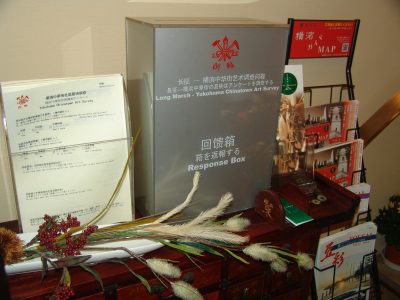
Yokohama Chinatown | Yokohama Triennial
Chinatown
Time: November 5 – May 8, 2005
Location: Yokohama
Participating Artists: Chen Xiaoyun, Yao Jui-Chung, Jiang Jie, Long March Collective (Guo Fengyi, Hu Xiancheng, Qiu Zhijie, Xu Zhen, Zhao Gang, and an anonymous artist)
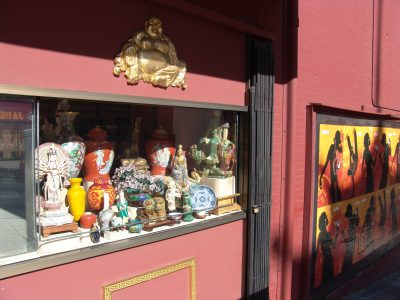
San Francisco Chinatown | Curating Contemporary Art, California College of Art
Chinatown
Time: November, 2005
Location: San Francisco
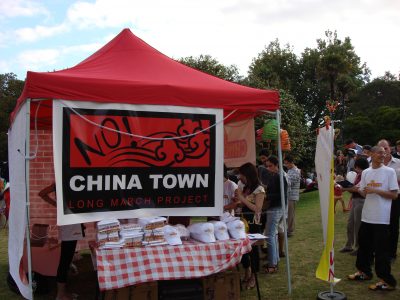
Auckland (No) Chinatown | Auckland Triennial
Chinatown
Time: March 9 – June 3, 2007
Location: Auckland
San Francisco Chinatown | Curating Contemporary Art, California College of Art
Chinatown
Time: November, 2005
Location: San Francisco
Long March Project director Lu Jie spent the month of November 2005 at the California College of Art (CCA), San Francisco, USA as ‘Curator in Residence’. During this time he taught a course for the ‘MA Curating Contemporary Art’ degree, using the Long March Project as a curatorial model and testing ground for the development of case study focus on one of its ongoing programs titled Chinatown. Students were divided into 3 groups to develop project proposals and make in-class presentations.

SF Chinatown Streetscape
Through an introduction of the Long March Project, students examined the problems confronting contemporary curatorial practice, both from a theoretical perspective and its manifestation in exhibition form, with the aim of strengthening the relationship between theory and practice, and the international and local. By looking at particular case studies from the Long March Project, students became familiarized with the entire process of turning curatorial concept into practice, and developed their own curatorial direction and professional knowledge through research, proposal, discussion and summary. A potential ‘Long March Project – Chinatown’ to take place in the San Francisco, served as a training model where students practiced resolving common problems and contradictions faced by curators.
The course took a dual approach, not only conveying the concepts and methods of the Long March Project, but more importantly strengthening the methodology of the Long March Project through soliciting student reaction and criticisms. Therefore, the course was not only a forum for discussion and debate, but also a workshop for practical curatorial methods and strategies. The course not only presented students with constructive criticism for their professional development, but also examined the Long March itself and brought to light areas for improvement.
Course Summary
The course is aimed at generating both theoretical discussion and criticism, as well as creating a workshop for the development of curatorial practice and strategies.
Through an introduction to the Long March Project, students will examine the problems confronting contemporary curatorial practice, both from a theoretical perspective as well as its manifestation in exhibition form, with the aim of strengthening the relationship between theory and practice, and the international and local. By looking at particular case studies from the Long March Project, students will become familiarized with the entire process of turning curatorial concept into practice, as well as develop their own curatorial direction and professional knowledge. A potential “Long March Project – Chinatown” to take place in the San Francisco will serve as a training model where students will practice resolving common problems and contradictions faced by curators. Through research, proposals, discussion and summary, students will learn to negotiate the balance between theory and practice, and successfully navigate the key elements of curatorial work.
The course takes a dual approach, not only conveying the concepts and methods of the Long March, but more importantly strengthening the Long March’s future implementation by soliciting student reaction and criticisms of the Long March methodology through the examination of particular case studies. Therefore, the course is not only a forum for discussion and debate, but also a workshop for practical curatorial methods and strategies. The course aims not only to present students with constructive criticism for their professional development, but at the same time to examine the Long March itself and provide areas for improvement.
Course Syllabus

Tuesday Nov 1
A. Presentation of Long March Project
a. General introduction to Long March Project
i. Experiences and ideas leading up to the development of project
ii. What was it responding to, who is its intended audience
b. 2002 process of carrying out the Long March
i. Difficulties encountered
ii. Development and contradictions on the road
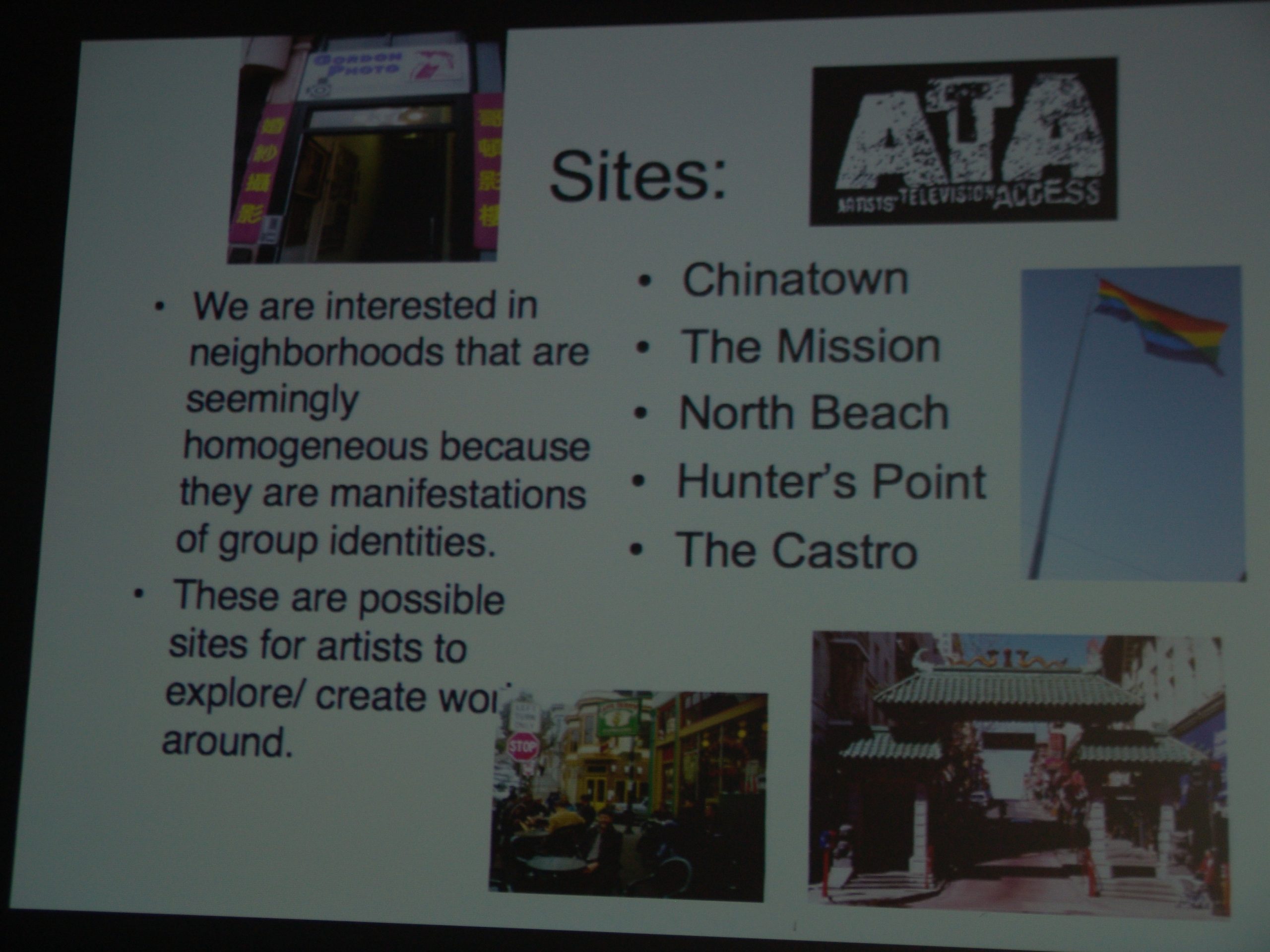
Wednesday Nov 2
B. Discussion and critique of Long March/Chinatown
a. Why did we stop before completion?
i. In attempting to do something outside of the institution, how are you free? What do you risk?
ii. What happens when curatorial idea conflicts with reality? How does art fit into a system that operates different and separate from biennale and museum structure?
1. Administrational conflicts, artistic problems
2. How are these problems made apparent?
iii. What is completion? The Long March as an organic ongoing structure.
b. Building a site 25000 Cultural Transmission Center
i. Site 13 as a continuous site
1. Aims and purposes
2. Conflicts and problems
c. Dissatisfaction with contemporary art.
i. Power of public realm exhibition
ii. Papercutting Exhibition
1. Success at Shanghai Biennale
2. Failure at Taipei Biennale
d. What now?
i. Trace Long March exhibitions in international space
1. Oslo and Lyon
2. Other exhibition invitations
ii. Rethinking of international context, rather than presenting retrospective of Long March
1. What does Long March mean globally?
2. How can the Long March go international?
e. Chinatown Project
i. Discussion of ideas and intentions
ii. Example of Chinatown with Yokohama
1. Artist selection process and curatorial strategy
2. Negotiations and working with triennale context
Assignment: Please begin to develop and research a curatorial plan for Chinatown project in San Francisco; including research on artists and possible sites. What themes will be engaged? How will context and site be utilized to engage with history as well as the curatorial concept? What form do you feel would work best? Which artists would you choose to engage with these themes in relation to the contexts of site? Will the proposal require working with local museums, utilizing local infrastructure? Please begin to develop a budget for the proposal as well.
Wed November 16
C. Curatorial Strategies and role of curator
a. Classroom presentations of proposals. Two groups of 4; one group of 5 presentation. 40 minutes each presentation detailing proposal including: curatorial idea, proposal, artist list
b. 40 minutes dedicated to questions and discussion after all presentations have been given. Questions should focus on curators role, artist selection, community involvement and support.
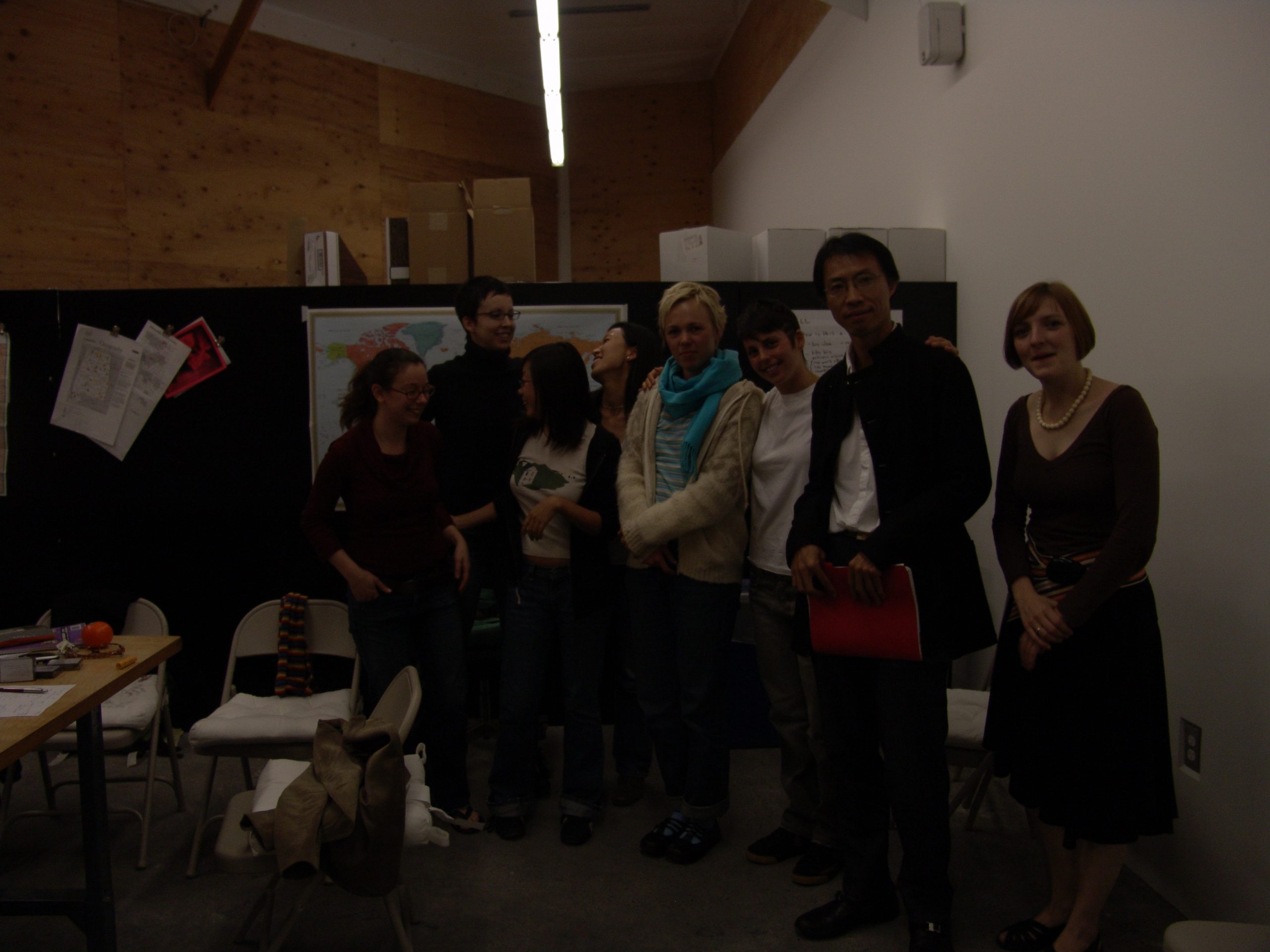
Wed November 23
D. Concept and Practice, meeting in Chinatown
Each group will present their revised proposals and their detailed plans for how to work within particular chosen sites.
a. What is the actuality versus curatorial projection? What types of problems and situations do we encounter that are different from traditional art space contexts?
b. Discussion – Resolving problems, presenting solutions, and alternatives. Onsite discussion and suggestions regarding the proposals
Suggested Readings
Long March Context
Karl Marx and Friedrich Engels, The Communist Manifesto
Mao Zedong, Selected Readings Volume 1-5
Leon Trosky, Problem of Chinese Revolution, New Park publication, London,1969
Edgar Snow, Red Star Over China – The Classic account of the Birth of Chinese Communisim, Grove Press, New York
Harrison Salisbury, The Long March, McGraw-Hill, 1987
Julia Kristeva, About Chinese Women, Marion Boyars, New York and London, 1986
Simone de Beauvoir, The Long March – An Account of Modern China, Phoenix Press, 2001
Susan Buck-Morss, Dream World and Catastrophe – The Passing of Mass Utopia in East and West, MIT Press, 2002
Curatorial Context
Nicolas Bourriaud, Relational Aesthetics, Les presses du reel, 2002
Claire Doherty, From Studio to Situations : Contemporary Art and the Question of Context, Black Dog Publishing; 2005
Miwon Kwon, One Place After Another: Site-Specific Art and Locational Identity
Alex Coles, Site-Specificity: The Ethnographic Turn, De-, Dis-, Ex-, Volume 4; Black Dog Publishing; July 2000
Simon Ford, The Situationist International, Black Dog Publishing, 2005
Okwui Enwezor and others, Documenta XI catalog
Alice Yang, Why Asia? Contemporary Asian and Asian American Art, New York University Press, 1998
Gao Minglu, Inside Out, New Chinese Art, Asia Society and San Franciso Museum of Modern Art,1999
Feng Boyi. “ ‘Under Under-ground’ and Others on Chinese Avant-garde Since 1990, The Monk and The Demon, Chinese Contemporary Art, Pg 59 – 67,Musee Art Contemporain Lyon, 2004
Do You Believe in Reality? 2004 Taipei Biennale Catalog
Techniques of the Visible, 2004 Shanghai Biennale Catalog
Sarat Maharaj with Gilane Tawadros, “We were nobody. We were nothing: North/South soundings of modernity & ‘memories of underdevelopment.’”
Long March Project director Lu Jie spent the month of November 2005 at the California College of Art (CCA), San Francisco, USA as ‘Curator in Residence’. During this time he taught a course for the ‘MA Curating Contemporary Art’ degree, using the Long March Project as a curatorial model and testing ground for the development of case study focus on one of its ongoing programs titled Chinatown. Students were divided into 3 groups to develop project proposals and make in-class presentations.

Through an introduction of the Long March Project, students examined the problems confronting contemporary curatorial practice, both from a theoretical perspective and its manifestation in exhibition form, with the aim of strengthening the relationship between theory and practice, and the international and local. By looking at particular case studies from the Long March Project, students became familiarized with the entire process of turning curatorial concept into practice, and developed their own curatorial direction and professional knowledge through research, proposal, discussion and summary. A potential ‘Long March Project – Chinatown’ to take place in the San Francisco, served as a training model where students practiced resolving common problems and contradictions faced by curators.
The course took a dual approach, not only conveying the concepts and methods of the Long March Project, but more importantly strengthening the methodology of the Long March Project through soliciting student reaction and criticisms. Therefore, the course was not only a forum for discussion and debate, but also a workshop for practical curatorial methods and strategies. The course not only presented students with constructive criticism for their professional development, but also examined the Long March itself and brought to light areas for improvement.
Course Summary
The course is aimed at generating both theoretical discussion and criticism, as well as creating a workshop for the development of curatorial practice and strategies.
Through an introduction to the Long March Project, students will examine the problems confronting contemporary curatorial practice, both from a theoretical perspective as well as its manifestation in exhibition form, with the aim of strengthening the relationship between theory and practice, and the international and local. By looking at particular case studies from the Long March Project, students will become familiarized with the entire process of turning curatorial concept into practice, as well as develop their own curatorial direction and professional knowledge. A potential “Long March Project – Chinatown” to take place in the San Francisco will serve as a training model where students will practice resolving common problems and contradictions faced by curators. Through research, proposals, discussion and summary, students will learn to negotiate the balance between theory and practice, and successfully navigate the key elements of curatorial work.
The course takes a dual approach, not only conveying the concepts and methods of the Long March, but more importantly strengthening the Long March’s future implementation by soliciting student reaction and criticisms of the Long March methodology through the examination of particular case studies. Therefore, the course is not only a forum for discussion and debate, but also a workshop for practical curatorial methods and strategies. The course aims not only to present students with constructive criticism for their professional development, but at the same time to examine the Long March itself and provide areas for improvement.
Course Syllabus

Tuesday Nov 1
A. Presentation of Long March Project
a. General introduction to Long March Project
i. Experiences and ideas leading up to the development of project
ii. What was it responding to, who is its intended audience
b. 2002 process of carrying out the Long March
i. Difficulties encountered
ii. Development and contradictions on the road

Wednesday Nov 2
B. Discussion and critique of Long March/Chinatown
a. Why did we stop before completion?
i. In attempting to do something outside of the institution, how are you free? What do you risk?
ii. What happens when curatorial idea conflicts with reality? How does art fit into a system that operates different and separate from biennale and museum structure?
1. Administrational conflicts, artistic problems
2. How are these problems made apparent?
iii. What is completion? The Long March as an organic ongoing structure.
b. Building a site 25000 Cultural Transmission Center
i. Site 13 as a continuous site
1. Aims and purposes
2. Conflicts and problems
c. Dissatisfaction with contemporary art.
i. Power of public realm exhibition
ii. Papercutting Exhibition
1. Success at Shanghai Biennale
2. Failure at Taipei Biennale
d. What now?
i. Trace Long March exhibitions in international space
1. Oslo and Lyon
2. Other exhibition invitations
ii. Rethinking of international context, rather than presenting retrospective of Long March
1. What does Long March mean globally?
2. How can the Long March go international?
e. Chinatown Project
i. Discussion of ideas and intentions
ii. Example of Chinatown with Yokohama
1. Artist selection process and curatorial strategy
2. Negotiations and working with triennale context
Assignment: Please begin to develop and research a curatorial plan for Chinatown project in San Francisco; including research on artists and possible sites. What themes will be engaged? How will context and site be utilized to engage with history as well as the curatorial concept? What form do you feel would work best? Which artists would you choose to engage with these themes in relation to the contexts of site? Will the proposal require working with local museums, utilizing local infrastructure? Please begin to develop a budget for the proposal as well.
Wed November 16
C. Curatorial Strategies and role of curator
a. Classroom presentations of proposals. Two groups of 4; one group of 5 presentation. 40 minutes each presentation detailing proposal including: curatorial idea, proposal, artist list
b. 40 minutes dedicated to questions and discussion after all presentations have been given. Questions should focus on curators role, artist selection, community involvement and support.

Wed November 23
D. Concept and Practice, meeting in Chinatown
Each group will present their revised proposals and their detailed plans for how to work within particular chosen sites.
a. What is the actuality versus curatorial projection? What types of problems and situations do we encounter that are different from traditional art space contexts?
b. Discussion – Resolving problems, presenting solutions, and alternatives. Onsite discussion and suggestions regarding the proposals
Suggested Readings
Long March Context
Karl Marx and Friedrich Engels, The Communist Manifesto
Mao Zedong, Selected Readings Volume 1-5
Leon Trosky, Problem of Chinese Revolution, New Park publication, London,1969
Edgar Snow, Red Star Over China – The Classic account of the Birth of Chinese Communisim, Grove Press, New York
Harrison Salisbury, The Long March, McGraw-Hill, 1987
Julia Kristeva, About Chinese Women, Marion Boyars, New York and London, 1986
Simone de Beauvoir, The Long March – An Account of Modern China, Phoenix Press, 2001
Susan Buck-Morss, Dream World and Catastrophe – The Passing of Mass Utopia in East and West, MIT Press, 2002
Curatorial Context
Nicolas Bourriaud, Relational Aesthetics, Les presses du reel, 2002
Claire Doherty, From Studio to Situations : Contemporary Art and the Question of Context, Black Dog Publishing; 2005
Miwon Kwon, One Place After Another: Site-Specific Art and Locational Identity
Alex Coles, Site-Specificity: The Ethnographic Turn, De-, Dis-, Ex-, Volume 4; Black Dog Publishing; July 2000
Simon Ford, The Situationist International, Black Dog Publishing, 2005
Okwui Enwezor and others, Documenta XI catalog
Alice Yang, Why Asia? Contemporary Asian and Asian American Art, New York University Press, 1998
Gao Minglu, Inside Out, New Chinese Art, Asia Society and San Franciso Museum of Modern Art,1999
Feng Boyi. “ ‘Under Under-ground’ and Others on Chinese Avant-garde Since 1990, The Monk and The Demon, Chinese Contemporary Art, Pg 59 – 67,Musee Art Contemporain Lyon, 2004
Do You Believe in Reality? 2004 Taipei Biennale Catalog
Techniques of the Visible, 2004 Shanghai Biennale Catalog
Sarat Maharaj with Gilane Tawadros, “We were nobody. We were nothing: North/South soundings of modernity & ‘memories of underdevelopment.’”
